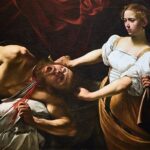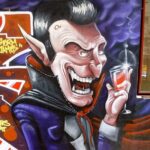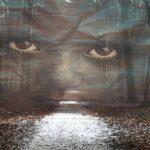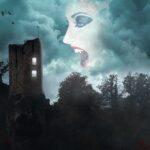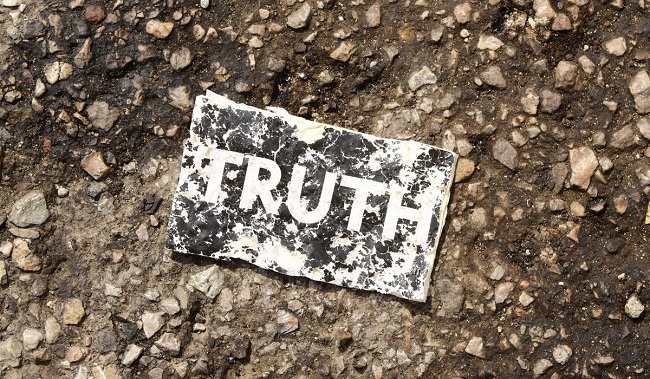
In his essay, “On Truth and Lies in a Nonmoral Sense” (1873), the renowned philosopher Friedrich Nietzsche discusses the relations between language and “truth,” and argues that universal truths are merely made-up constructs of human beings. While this premise might be a little challenging to grasp at first since we are all bound to perceive reality according to our contemporary cultural, social, economic and political conceptions, a historical bird’s-eye view can illuminate Nietzsche’s argument.
This essay will attempt to illustrate how various inconsistent – and in some aspects, even contradictory – sets of values could be perceived as the truth by the very same society in different periods. This argument will be demonstrated through analysis and comparison of three notable war poems of distinguished British poets who lived in different eras: “The Ballad of Agincourt” by Michael Drayton (1605), “The Charge of the Light Brigade” by Alfred Tennyson (1854), and “Dulce et Decorum Est” by Wilfred Owen (1920).
It is first important to explain Nietzsche’s main contention in his essay. Nietzsche determines that alleged universal truths are nothing more than embellished rhetorical devices that deceive people into believing them to be stable constants (Nietzsche, 1873):
What then is truth? A mobile army of metaphors, metonymies, and anthropomorphisms: in short, a sum of human relations which have been poetically and rhetorically intensified, transferred, and embellished, and which, after long usage, seem to a people to be fixed, canonical, and binding. Truths are illusions which we have forgotten are illusions.
If one accepts Nietzsche’s hypothesis that “truth” is just an embellished poetical and rhetorical illusion, then purposeful and meticulously embellished poetic and rhetorical texts are the best projections of those illusions. Hence, highly celebrated poems that capture the general spirits of certain ages can convey their supposed truths and thus elucidate the differences between them.
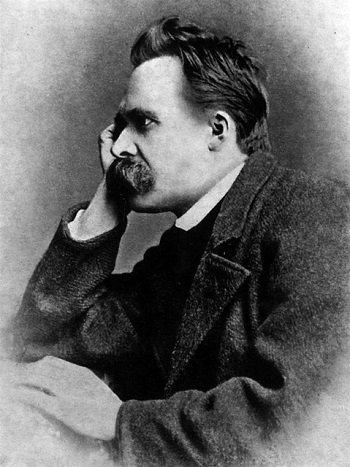
It is also important to note that the sentiments and notions expressed in each poem do not necessarily represent an entire society in a specific time and that there were naturally many other voices as well. Yet, the particular views in these esteemed poems embody widespread common positions during their respective period and can therefore denote how varying principles and ideas were perceived as “truths” by many in those eras alternately – which reinforces Nietzsche’s contention in his essay.
The first poem, “The Ballad of Agincourt” by Michael Drayton, was first published at the beginning of the 17th century, during a period when “there was undoubtedly much expression of English patriotism and nationalism in Elizabeth’s reign” (Curry, 2000). Unlike later periods which will be discussed further on, patriotism and nationalism were very much conjoined and associated with the monarchy – as the poem demonstrates.
The poem commemorates Great Britain’s triumph against France at Agincourt in 1415 and principally celebrates King Henry V, who led the battle; additionally, it also gives little weight to the struggle and sacrifice of ordinary soldiers who took part in the battle. This is evident almost from the very beginning of the poem: the speaker proclaims that “[w]ith all his martial train / Landed King Harry” in France (7-8) – the King is in the center, and the soldiers merely have an auxiliary role. Furthermore, the only one with an actual voice in the poem is King Henry, with a relatively long direct speech quote throughout three stanzas (25-48). The speaker does recognize the significance of the “English archery” (71) in the battle, their “true English hearts” (79) and that they “were hardy” (88); yet, their contribution is eclipsed by the “noble king” who “[d]own the French host did ding, / As to o’erwhelm it,” and his personal sacrifice when “many a cruel dent / Bruised his helmet” (89-96).
When the speaker does relate to other figures specifically besides King Henry, he mentions only those who belong to the British nobility, such as the dukes Exeter, Gloucester and Clarence, the earls Warwick and Suffolk, and the lords Willoughby and Ferrers, all of whom derive their rank and authority from the King. The poem ends with the lionizing rhetorical question, when shall “England breed again / Such a King Harry?” (119-20), reaffirming to whom all the glory and praise belong.
As the poem illustrates, at the beginning of the 17th century and certainly in the 15th century, the British monarchy was perceived at the center of British society, and to which, among many other things, all military triumphs and feats were attributed; the ordinary British soldiers, consequently, received only marginal recognition for their efforts and loss. As the following poems will show, this perception of the “truthful” social order would ultimately be altered unrecognizably over the next few centuries.
Tennyson’s “The Charge of the Light Brigade” was published in 1854 about a catastrophic battle of a British cavalry unit in the Crimean War several months earlier. During that period, the standing of the British monarchy had already declined drastically after tumultuous political upheavals throughout the 17th and 18th centuries that had shifted the balance of power from the Crown to parliament (Harris, 2007). Correspondingly, Tennyson’s war poem accentuates heroism according to a new set of “truthful” values: the most extolled are now the ordinary soldiers who had dutifully died in service for their country without asking questions or doubting their mission, erroneous as it might have been.
Unlike Drayton’s poem, “The Charge of the Light Brigade” does not refer to or allude to any one specific person but spotlights all of the brigade’s “six hundred” as one collective unit; the only quotes in the poem belong to a generic soldier who just flatly prods, “Forward, the Light Brigade” (5, 9). The speaker stresses that the soldiers had known that “[s]omeone had blundered” (12) – they were aware that a fatal mistake had been made, and still, they had kept on riding obediently to their death. The speaker then admiringly explains with the support of a reverberating anaphora, “Theirs not to make reply, / Theirs not to reason why, / Theirs but to do and die” (13-5); the speaker thus emphasizes the honor of following orders blindly, even in the face of probable death. The soldiers are hailed repeatedly for how “[b]oldly they rode” (23) and how they “had fought so well” (45), although they knowingly and inescapably entered “the jaws of Death” (24, 46), and the poem ends with a call to “[h]onour the charge they made! / Honour the Light Brigade” (53-4).
For Tennyson in the 19th century, then, “true” heroism is the unwavering obedience of the simple soldiers, in contrast with Drayton, who ascribes it to the monarchy. This blind obedience, however, was not perceived as “truthful” anymore in later periods, as the next poem will demonstrate.
Perhaps the most significant shift in the perception of truth with regard to war occurred during one of the most horrific military conflicts in history, World War I. The atrocities and horrors of this war cultivated great anti-war sentiments within English society that were shaped – surprisingly or not – by poetry (Das, 2013): “it is the poetry of the trenches, as represented by a small group of ‘anti-war’ soldier-poets, that has come to dominate First World War memory.” One of these highly acclaimed ‘soldier-poets’ is Wilfred Owen, who died in battle in 1918, just shortly before the end of the war. In his own words, Owen draws a clear line between war, poetry and “truth” (Owen, 1990):
My subject is War, and the pity of War. The Poetry is in the pity. Yet these elegies are to this generation in no sense consolatory. They may be to the next. All a poet can do today is warn. That is why the true Poets must be truthful.
The “truth” is, therefore, no longer the glory of kings and aristocrats, nor the heroism in blindly following orders for one’s country, but now it is the “true” horrid portrayal of war and its criticism.
One of Owen’s most famous poems is “Dulce et Decorum Est” which was published in 1920 after his death. The chief “truths” in Owen’s war poem almost completely contradict the “truths” that the previous poems incorporate: instead of brave heroism in battle, Owen presents the soldiers’ experience as gruesome and traumatic, and he even impugns the nationalistic notions for which soldiers are sent to war.
From the first line of the poem, the discrepancy between the depiction of the soldiers in this poem and the previous poems is really conspicuous: whereas both Drayton and Tennyson only regard soldiers with glorifying terminology, Owen refers to them – and as a soldier in the war, to himself as well – as “old beggars,” “hags,” “[m]en marched asleep,” “blind” and “deaf” (1-7) among other uncomplimentary descriptions. Even when the soldiers encounter the challenges of war – an opportunity to prove their courage and prowess – Owen describes their actions with very unheroic verbs such as “fumbling,” “stumbling,” “flound’ring” and “drowning” (9-14). Additionally, Owen does not present war solely as utterly ghastly and unheroic but also as extremely traumatic. He recounts how in all his “dreams” he sees a fallen soldier “guttering, choking, drowning” (15-6), and thereafter he details a grisly account of the soldier’s death (17-24).
Lastly, he ends with a harsh condemnation of nationalism and patriotism: he regards soldiers as “children ardent for some desperate glory” (26) and intimates that “Dulce et decorum est / Pro patria mori” – it is sweet and honorable to die for your country, in Latin – is nothing more than an “old Lie” (27-8). This is 180 degrees of deviation from the “truths” in the poems of Drayton and Tennyson.
Nietzsche’s hypothesis in “On Truth and Lies in a Nonmoral Sense” is not easy to process and acknowledge; human beings always live within specific cultural, social, economic and political contexts, which make it difficult to fathom that these are all merely made-up constructs of human beings. Upon an objective examination of history, one can discover that Nietzsche’s argument has merits, at least to a certain degree.
“Truths” that are recognized by a particular society in a particular era might not be the same “truths” that are recognized by the same society in a different era, and for that matter, nor by a different society in the same era. What Drayton perceives as “truth” in “The Ballad of Agincourt” is not the same “truth” that Tennyson perceives in “The Charge of the Light Brigade” and certainly not the same “truth” that Owen perceives in “Dulce et Decorum Est.” Prevalent political and national notions in the 17th century are at variance with 19th-century notions, while 20th-century notions oppose both – and all seemed naturally “truthful” during their respective periods. Who knows, perhaps in the 22nd century, we would look back at 21st-century democratic “truths” and see them as utterly asinine and false.
Works Cited
Curry, Anne. The Battle of Agincourt: Sources and Interpretations. Boydell Press, 2000. pp. 321-332.
Harris, Tim. “Introduction” from Revolution: The Great Crisis of the British Monarchy, 1685- 1720. Penguin UK, 2007.
Nietzsche, Friedrich. “On Truth and Lies in a Nonmoral Sense.” Philosophy and Truth. Selections from Nietzsche’s Notebooks of the Early 1870s. 1873.
Owen, Wilfred. “Preface” from The Poems of Wilfred Owen, Jon Stallworthy ed. London: Chatto & Windus. 1990.
